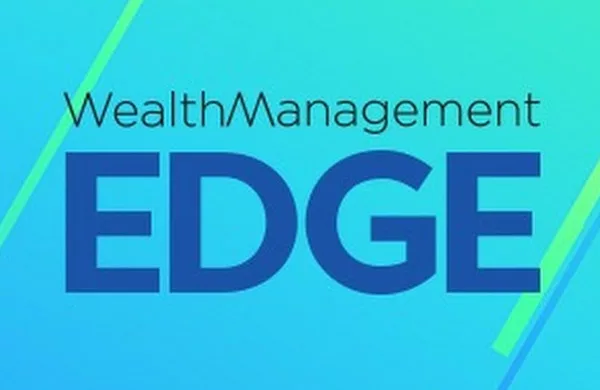401k, 403b, IRA, Roth IRA… Your retirement savings options can get confusing. I’m here to help.
Choosing the right type of plan to help save and grow your money for retirement is important, but it can also be a challenge. In today’s blog, I’ll cover the pros and cons of your 401(k); simple IRAs versus Roth IRAs; 403(b)s and other options; and things to consider when preparing your accounts for retirement.
Let’s start with the most popular type of retirement account by far, your 401k. I say “your” 401k under the assumption you may have one, because about 60 million Americans do. That makes it the most popular option for American workers, and there are several reasons for that. First, it’s an easy option if your employer offers it. Second, as most people know, a 401(k) provides tax advantages, including reducing your taxable income. Also, the money in your 401(k) grows tax-free until you withdraw it, which the government requires you to do each year starting at age 72. Third, your employer matches your 401(k) contributions, and your contribution limits are relatively high. Those are the main benefits of a 401(k), but what are the drawbacks? The first involves the process of “vesting”, which means you may only earn your employer-contributed portion of your savings over several years. If you leave the company before becoming “fully vested,” you’ll keep all your contributions but may get only a portion of your employer’s match. The second drawback is that your investment choices are limited. Your money is typically put to work for you within a narrow range of growth-based investment vehicles, mainly mutual funds. That means your account is highly vulnerable to stock market volatility.
Now let’s talk about two other popular options and how they compare: the traditional IRA and Roth IRA. A traditional individual retirement account is a tax-advantaged savings plan available to anyone and managed by the individual. The benefits include: One, almost anyone with income can open and contribute to a traditional IRA, so they’re a good choice if you don’t have access to a 401(k). Two, the tax rules and advantages of your traditional IRA are very similar to those of a 401(k). And three, you have more investment options than you get with a 401(k). The biggest drawback of a traditional IRA is that your contributions aren’t matched by your employer – and your contribution limits are much lower. So, what about a Roth IRA? The biggest difference between a Roth and a traditional IRA involves when you get your tax benefits: With a traditional IRA, you pay no income tax on your contributions, but you pay tax when you take the money out. With a Roth IRA, it’s just the opposite: you pay taxes on the money you contribute, but then you can withdraw it tax-free at retirement.
Now let’s look at five other choices designed for specific employment situations. The first three are all very similar to a traditional 401(k). Number one is a solo or one-participant 401(k), which is designed for an individual business owner with no employees. Number two is a 403(b), which you’re eligible for if you work for a nonprofit or tax-exempt organization. Number three is a 457(b) plan, which is an option offered through state and local governments. Number four is a SIMPLE IRA. SIMPLE is an acronym for Savings Incentive Match Plan for Employees. It’s designed mainly for small businesses with 100 or fewer employees. And number five is a SEP IRA, which stands for Simplified Employee Pension. This is a specialized IRA used mainly by self-employed people or small business owners.
While each of the options I’ve talked about differ in many ways, all of them offer a variety of tax benefits and other government-sponsored incentives to encourage you to save for retirement. Uncle Sam wants you to save as much as you can and enjoy a more successful retirement. That’s why he lets you grow your money tax-free through most of these accounts. But the term tax-free isn’t accurate. It’s really tax deferred. As I’ve noted several times, the government makes you start taking money out of these accounts every year and paying taxes on it once you reach age 72. These are your required minimum distributions. Once you’re nearing retirement age, it’s time to start thinking about how you’re going to try to minimize the tax-burden your RMDs create. At the same time, you need to think about how to satisfy your RMDs in a way that doesn’t jeopardize your entire savings. If your strategy involves satisfying your RMDs by taking systematic withdrawals from your IRA and most of that money is still in mutual funds, you run the risk of spending down your principal. Under certain market conditions you could end up cannibalizing your account and ultimately running out of income. The better strategy, in my experience, is to create an allocation within 5 to 10 years of retirement that will allow you to satisfy your RMDs from interest and dividends, without touching your principal. This is one of the cornerstones of the investing-for-income model, and it can be done in a way that also helps prepare you for all the other financial challenges you’ll face in retirement.
Investment Advisory Services offered through Sound Income Strategies, LLC, an SEC Registered Investment Advisory Firm. Arbor Financial Services of Florida, Inc. and Sound Income Strategies, LLC are not associated entities. Arbor Financial Services of Florida, Inc. is a franchisee of the Retirement Income Store. The Retirement Income Store and Sound Income Strategies LLC are associated entities.






